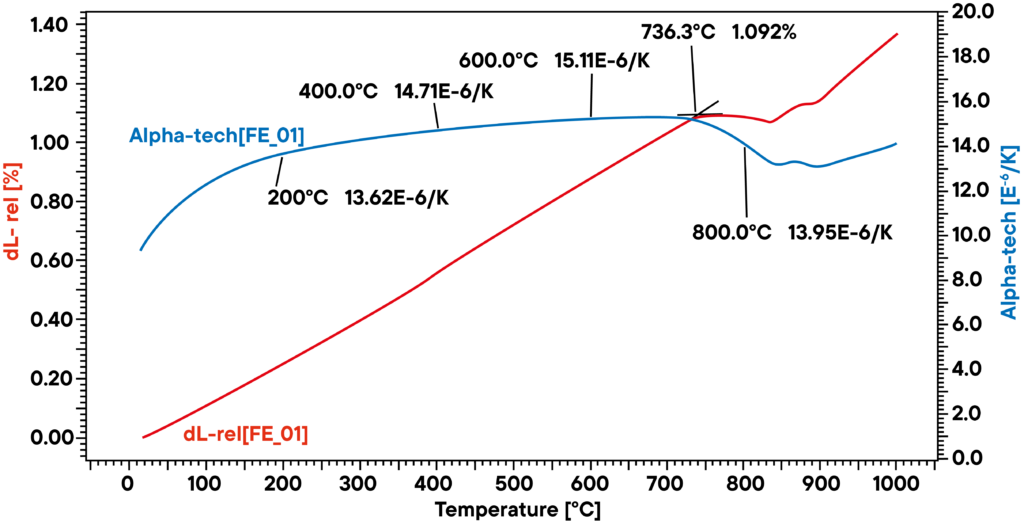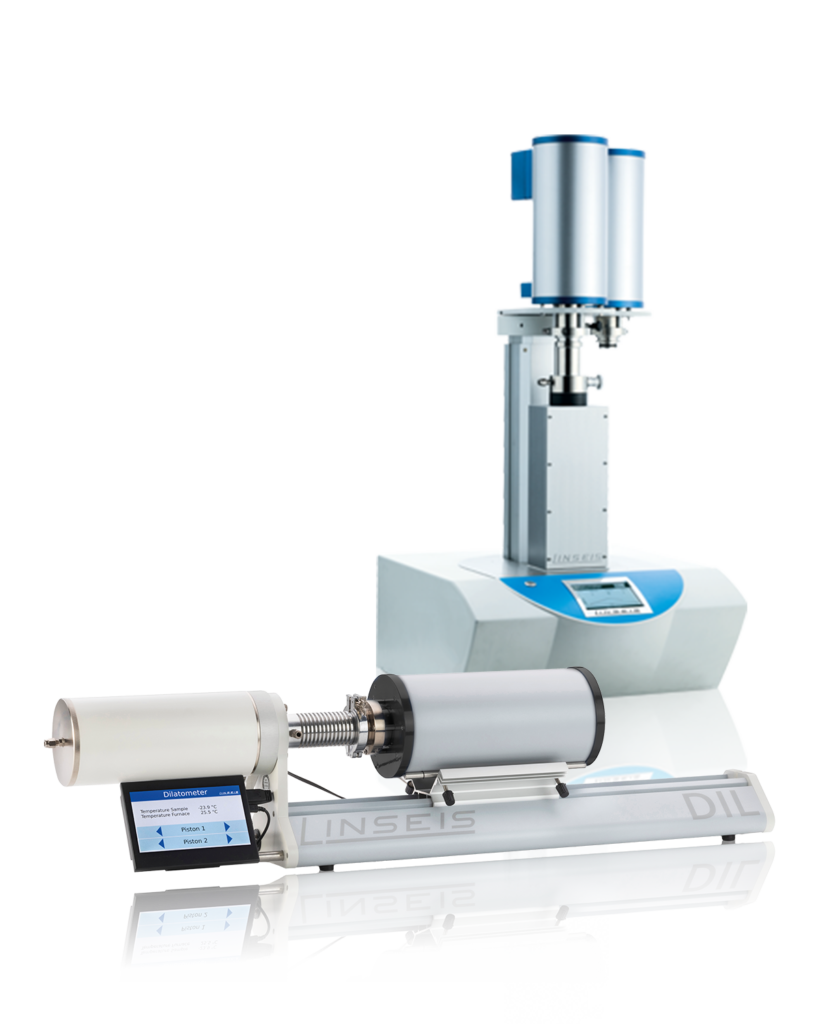Iron is one of the most used construction materials one of the most existing metals in the world. All steels are mainly consisting of iron which means most vehicles and buildings are more or less made of iron.
The mechanical properties of iron are what makes it an ideal material for all these purposes. It is considerable hard, stable, easy to handle and can be forged in open fire.
Most steels contain various other metals and carbon in different amounts, providing many properties like color, hardness grade, chemical resistance and many more. Naturally, iron is one of the best-known materials and analysis of iron and steels is more or less one of the most frequent applications in thermal analysis.

This measurement illustrates the linear thermal expansion (rel. ΔL – red curve) and the coefficient of thermal expansion CTE (blue curve) of the iron sample under argon atmosphere. The heating rate was 5 K/min. Above 736.3°C (maximum of CTE) shrinkage is detected, which is due to a phase change effect, also known as the Curie-point. The difference of measured and literature value can be attributed to contamination of the sample and small traces of other elements that were contained.

